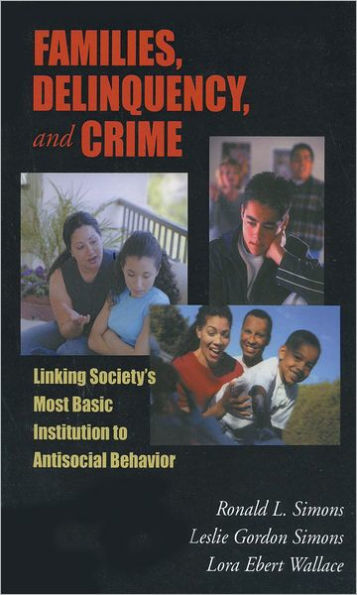5
1
9780195330427



Families, Delinquency, and Crime: Linking Society's Most Basic Institution to Antisocial Behavior / Edition 1 available in Paperback

Families, Delinquency, and Crime: Linking Society's Most Basic Institution to Antisocial Behavior / Edition 1
- ISBN-10:
- 0195330420
- ISBN-13:
- 9780195330427
- Pub. Date:
- 08/11/2004
- Publisher:
- Oxford University Press
- ISBN-10:
- 0195330420
- ISBN-13:
- 9780195330427
- Pub. Date:
- 08/11/2004
- Publisher:
- Oxford University Press

Families, Delinquency, and Crime: Linking Society's Most Basic Institution to Antisocial Behavior / Edition 1
$128.99
128.99
In Stock

Product Details
| ISBN-13: | 9780195330427 |
|---|---|
| Publisher: | Oxford University Press |
| Publication date: | 08/11/2004 |
| Series: | The ^ARoxbury Series in Crime, Justice, and Law |
| Edition description: | New Edition |
| Pages: | 232 |
| Product dimensions: | 6.14(w) x 9.21(h) x 0.53(d) |
About the Author
From the B&N Reads Blog

